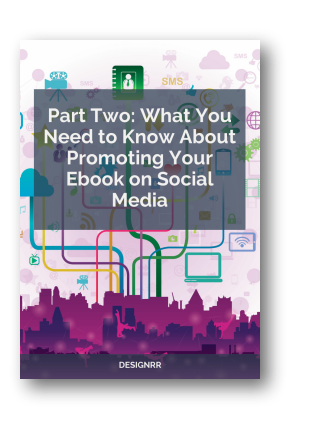Hey there, content marketing managers! We know you’re out there balancing creativity with data-driven strategies every day. It’s not easy, is it? But what if we told you there are tools out there that can make your job a whole lot smoother?
Let’s talk about some tools that can help you automate those repetitive tasks, spark new ideas, and turn complex data into something you can actually use. We’re not going to bore you with the same old list you’ve seen a million times. Instead, we’re going to look at some hidden gems that could really change how you create and share content in 2024 and beyond.
We’ll show you how these tools can fit right into your workflow, saving you time and energy while boosting your results. Whether you’ve been in the game for years or you’re just starting out, we’ve got some practical tips and tricks to help you stay on top of your game.
Ready to make your work life easier and unlock your full potential? Let’s dive in!
| Tool | Category | Purpose | Actionable Tip |
|---|---|---|---|
| Semrush | Content Creation & SEO | Keyword research, competitor analysis, content idea generation, content briefs | Use the “Content Template” feature to create data-driven briefs and track keyword rankings. |
| BuzzSumo | Content Discovery & Analysis | Identify trending topics, analyze content performance | Find high-performing content in your niche for inspiration and competitor analysis. |
| Grammarly | Writing & Editing | Grammar and spell check, writing style suggestions | Integrate with your writing tools (Google Docs, Word) to catch errors in real-time. |
| Hemingway App | Writing & Editing | Simplify writing, improve readability | Aim for a Hemingway Grade Level of 6 or lower for optimal clarity. |
| Canva | Design & Visuals | Create graphics, infographics, social media visuals, lead magnets | Leverage templates for quick creation and maintain brand consistency across visuals. |
| Hootsuite | Social Media Management | Schedule posts, track engagement, analyze performance, manage multiple channels | Experiment with different post formats and track engagement to optimize your social strategy. |
| Buffer | Social Media Management | Optimal post scheduling based on audience engagement patterns | Use the “Optimal Timing Tool” to maximize reach and engagement. |
| Sprout Social | Social Media Management | In-depth analytics, social listening, brand monitoring | Monitor brand mentions and sentiment to identify potential PR opportunities or address customer concerns. |
| Mailchimp | Email Marketing | User-friendly email creation, automation, audience segmentation, basic analytics | Segment your list based on user behavior to deliver highly personalized email content. |
| ConvertKit | Email Marketing | Audience segmentation, personalized email sequences, landing pages, creator-focused | Build targeted landing pages and email sequences to nurture leads and drive conversions. |
| ActiveCampaign | Email Marketing | Advanced automation, CRM integration, complex workflows | Use behavioral triggers to send personalized emails and create targeted customer journeys. |
| Designrr | Content Repurposing | Convert blog posts, articles, videos into eBooks, reports, whitepapers (lead magnets) | Offer high-value lead magnets to entice new subscribers and grow your email list. |
| Google Analytics | Analytics & Reporting | Comprehensive website traffic and user behavior analysis | Set up goals and track conversions to measure the effectiveness of your content marketing efforts. |
| Google Search Console | Analytics & Reporting | Search performance, keyword rankings, technical SEO issues | Monitor keyword rankings and address any crawl errors or indexing issues to improve visibility. |
| Databox | Analytics & Reporting | Customizable dashboards, data integration from multiple sources | Create dashboards that visualize your most important metrics for quick, data-driven decision-making.
|
Tools to Kickstart Your Content

We all know that feeling of staring at a blank page, right? Even if you’ve been doing this for years, it can still be pretty intimidating. But don’t worry – we’ve got some tools that can help turn that blank canvas into something amazing.
Semrush
Think of Semrush as your Swiss Army knife for content creation. It does it all – keyword research, competitive analysis, and even helps you come up with content ideas. Want to know what your audience is searching for? Semrush has got you covered. Curious about what your competitors are up to? Yep, Semrush can help with that too.
Pro Tip: Use Semrush’s “Content Template” feature. It’s like having a content strategist in your pocket, helping you create data-driven briefs and keep an eye on your keyword rankings.
BuzzSumo
Ever wish you had a crystal ball to see what’s going to be hot in your industry? Well, BuzzSumo is pretty close. It helps you spot trending topics and shows you how different types of content are performing across various platforms. It’s a great way to stay ahead of the curve and create content that really clicks with your audience.
Grammarly
Let’s face it – typos happen to the best of us. But they can really take the shine off even the most brilliant content. That’s where Grammarly comes in. It’s like having a super-detail-oriented friend looking over your shoulder, catching those little mistakes before anyone else sees them.
Read our complete proofreading software list for more options.
Hemingway App
Clear, easy-to-read writing is key if you want to keep people’s attention. The Hemingway App helps you simplify your writing, making it easier for your readers to understand and engage with. Aim for a Hemingway Grade Level of 6 or lower – your readers will thank you for it.
Canva
Want to make your content pop? Canva’s got your back. It’s a user-friendly platform that lets you create eye-catching graphics, infographics, and social media visuals, even if you’ve never designed anything in your life. It’s like having a secret weapon to make your content stand out from the crowd.
How to Put It All Together: Start with Semrush to do some deep keyword research and come up with content ideas based on what your audience is into. Once you’ve got a topic, use Semrush’s “Content Template” feature to create a detailed brief. Then, bring your content to life with Canva, creating visuals that’ll grab people’s attention and keep them engaged.
Tools to Rock Social Media

Social media is where it’s at these days. It’s where your audience hangs out, chats, and discovers new stuff. But let’s be real – managing multiple social channels can feel like you’re trying to juggle while riding a unicycle. Don’t worry, we’ve got some tools that’ll turn you into a social media pro.
Hootsuite
Imagine having one dashboard where you can manage all your social media channels. That’s Hootsuite. You can schedule posts, track how they’re doing, respond to comments, and analyze your performance across different platforms, all in one place. It’s like having a social media command center at your fingertips.
Buffer
Timing is crucial in social media. Post at the wrong time, and your brilliant content might get lost in the noise. Buffer uses smart algorithms to figure out when’s the best time to post, helping you reach more people and get more engagement.
Sprout Social
Want to really understand what’s going on with your social media efforts? Sprout Social gives you powerful analytics and social listening tools. You can understand how people feel about your brand, track when people mention you, and get valuable insights to fine-tune your social media strategy.
Putting It Into Action: Use Hootsuite to schedule a mix of different types of posts across your social channels – images, videos, text posts, polls, you name it. Then, use Hootsuite’s analytics to see which types of posts are hitting the mark with your audience. Adjust your strategy based on what you learn. And remember, social media is a two-way street. Use Sprout Social to keep an ear to the ground, respond quickly to comments and questions, and really engage with your audience.
Email Marketing Tools That Get Results

Email might not be the new kid on the block, but it’s still one of the best ways to build relationships with your audience, nurture leads, and drive conversions. Here are some tools that’ll help you create compelling email campaigns, automate your workflows, and track your results like a pro.
Mailchimp
If you’re new to email marketing, Mailchimp is a great place to start. It’s user-friendly and lets you create good-looking emails with drag-and-drop templates. You can also automate your campaigns, segment your audience, and track how you’re doing, all without needing a degree in rocket science.
ConvertKit
If you’re a creator or blogger, ConvertKit might be right up your alley. It’s got powerful features for segmenting your audience, creating personalized email sequences, and building landing pages. If you’re looking to build a loyal following and drive sales through email, ConvertKit is definitely worth checking out.
ActiveCampaign
For those of you who want to get really advanced with your email marketing, ActiveCampaign is a game-changer. You can build complex workflows, trigger personalized emails based on how people interact with your content, and integrate seamlessly with your CRM to get a full picture of your customer journey.
Designrr
Got great content that you want to turn into lead magnets? Designrr lets you quickly turn blog posts, articles, or videos into professional-looking eBooks, reports, and whitepapers that can attract and capture leads.
Make It Work For You: Start by growing your email list with a killer lead magnet. Use Designrr to turn one of your best pieces of content into a high-value eBook or guide that addresses a specific problem your target audience faces.
Then, connect your Designrr ebooks with your email marketing platform (whether that’s Mailchimp, ConvertKit, or ActiveCampaign) to automatically deliver the lead magnet when someone signs up. Use audience segmentation to send targeted emails based on what people are interested in and how they interact with your content. This can really boost how relevant and effective your campaigns are.
Tools to Measure Your Content’s Impact
Gut feeling is great, but when it comes to content marketing, you need cold, hard data to really understand what’s working and what’s not. These tools will help you become a data detective, uncovering insights about your audience, how they behave, and how your content is performing overall.
Google Analytics
This free tool from Google gives you a comprehensive look at your website traffic. You can see where your visitors are coming from, how they interact with your content, and which pages are most popular. It’s your go-to tool for understanding your audience and spotting areas where you can improve.
Google Search Console
Ever wonder how your site shows up in search results? Google Search Console shows you your search rankings, impressions, and click-through rates. It also alerts you to any technical SEO issues that might be holding you back in search results.
Databox
If you’re juggling data from multiple sources, Databox can be a real lifesaver. It pulls data from various platforms (like Google Analytics, social media, email marketing, etc.) into customizable dashboards, giving you a clear, consolidated view of how you’re performing.
Put It Into Practice: Start by setting clear goals for your content marketing efforts. Maybe you want to increase website traffic, generate more leads, or boost social media engagement. Having specific targets will guide your analysis. Use Google Analytics to track your progress towards these goals. Pay attention to things like bounce rate, time on page, and conversion rate to spot areas where you can make your content better and improve your results.
Check Google Search Console to make sure your website is being indexed properly and fix any technical issues that could be affecting your search rankings. With Databox, create custom dashboards that show the metrics that matter most for your goals. This lets you quickly assess how you’re doing and make decisions based on data, not just hunches.
Wrapping It Up
Having the right tools for content marketing is great, but knowing how to use them strategically is even better. These tools can help you not just keep up, but lead the way in a field that’s always changing. The key is to pick the right tools for what you need and work them smoothly into your workflow. Don’t be afraid to experiment, adapt, and keep learning. Your audience is out there waiting for your awesome content!
Remember, every piece of content is competing for attention. To make yours stand out, focus on providing unique insights and real value to your audience. Keep your finger on the pulse of your industry, always be on the lookout for new tools and techniques, and most importantly, never lose sight of what your audience needs and wants. With the right tools and approach, you can create content that not only gets noticed but also makes a real impact.





